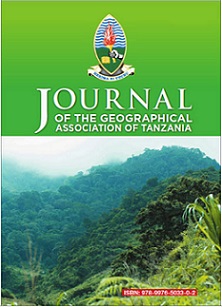The implication of Fire on Patterns of Plant Species diversity in Northwest uluguru Nature Forest reserve, Tanzania.
Abstract
This study examines the implication of fire on tree species diversity in northwest Uluguru Nature ForestReserve (UNFR). The study compared tree species diversity between burned and unburned areas, and
determined whether burned and unburned areas depicted any variation in stages of succession. Tree
species samples were drawn from eighteen stands, and tree species data were ordinate using Nonmetric
Multidimensional Scaling (NMS or NMDS) (PC-ORD version 5.10) to describe relationships (similarity
and dissimilarities) between tree species, forest succession, and the effect of fire on tree species. Species
richness did not vary significantly between burned and unburned plots. However, species composition
was high in burned stands, which contributed to a high basal area in burned stands. Unburned stands
had low species composition and low basal area. Fire intolerant tree species dominated unburned areas
while species in the burned areas were fire adapted. A few species existed in burned and unburned
stands. Trees in burned areas are still at a young succession stage while in unburned stands vegetation
development has reached a succession stage that the vegetation is stable with hardwood forest formation.
A sustainable management plan for the UNFR must base on empirical data on fire regime variation over
space and time.
Downloads
Published
2017-05-24
Issue
Section
Articles


